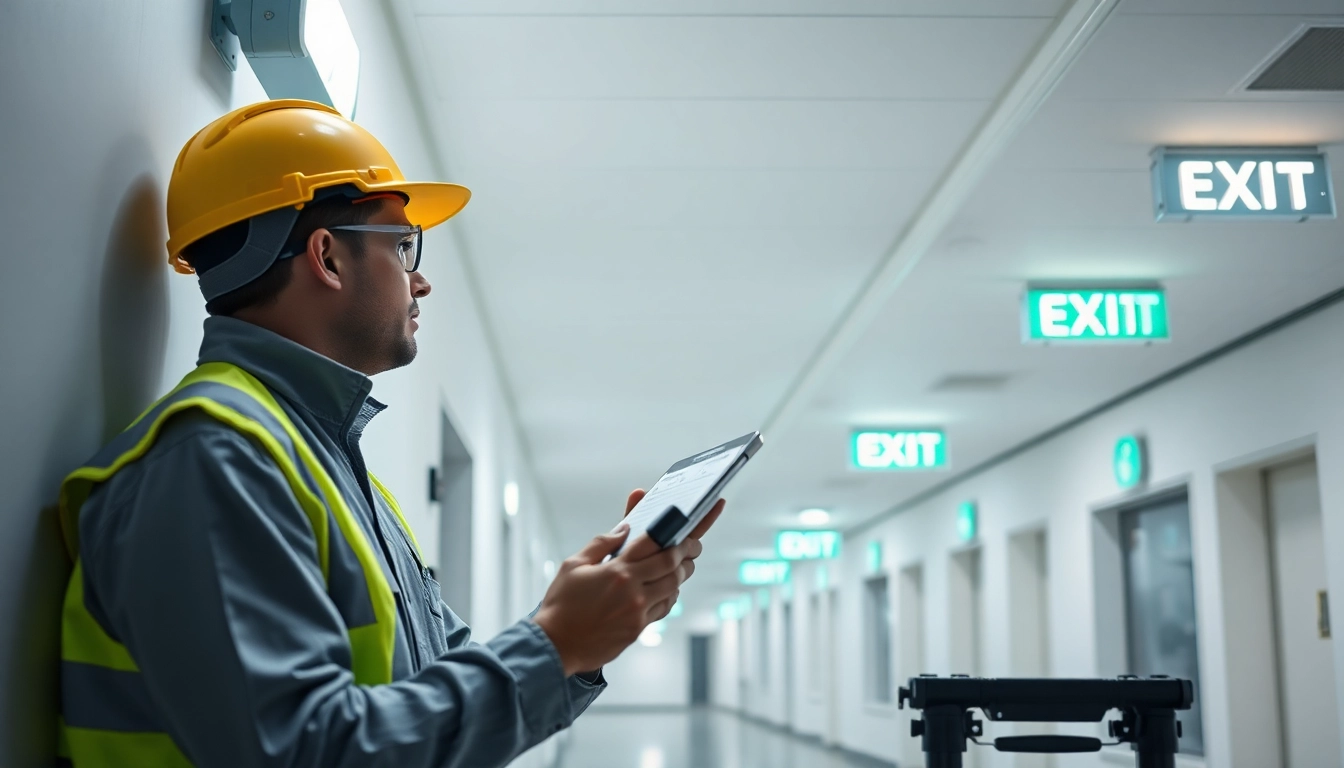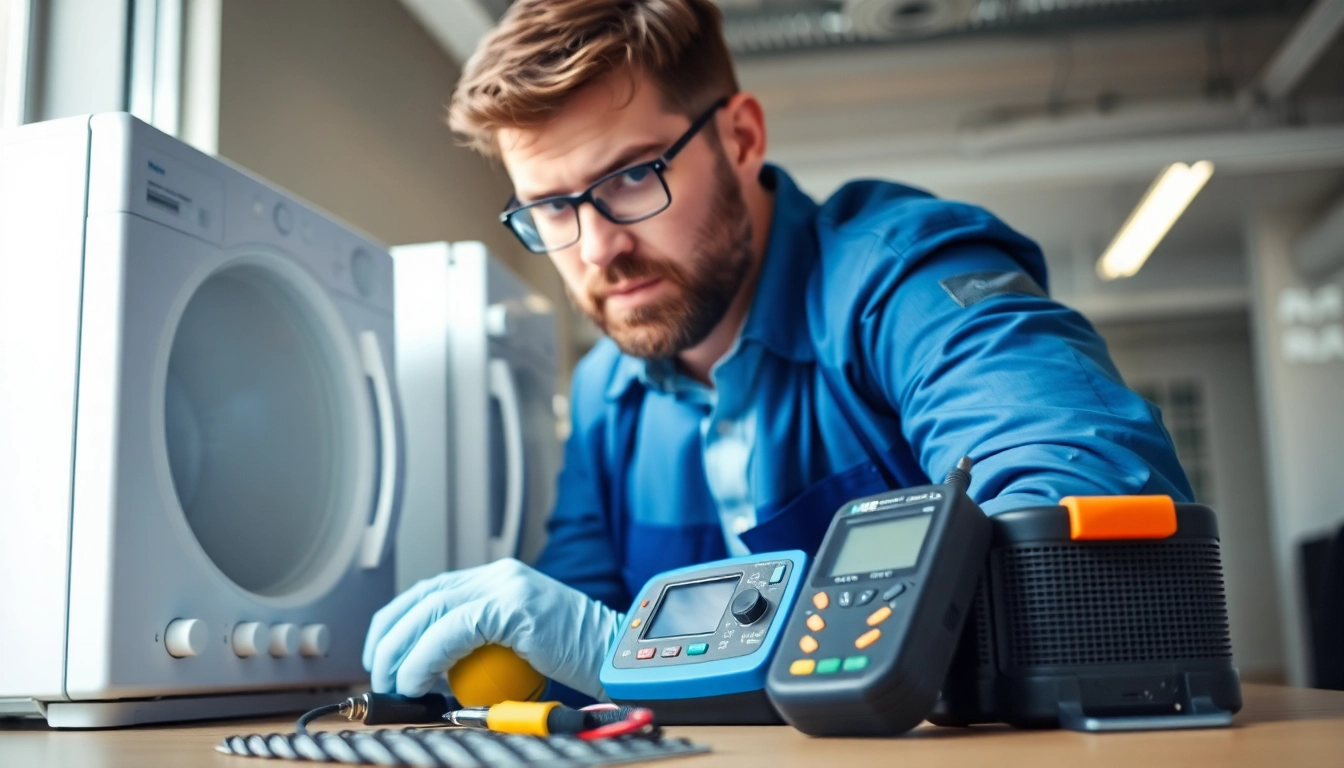Understanding the Importance of Emergency Light Testing
Emergency lighting systems play a crucial role in ensuring the safety of individuals during power outages or critical emergencies. These systems not only provide illumination in dark conditions but also guide people towards exits, helping to prevent injuries and fatalities. Furthermore, compliance with legal regulations regarding emergency lighting is critical for businesses and public entities. Without proper Emergency Light Testing, facilities risk facing severe penalties, legal liabilities, and, more importantly, endangering lives. This article delves into the intricacies of emergency light testing, emphasizing its importance, regulatory requirements, and best practices for effective implementation.
What is Emergency Light Testing?
Emergency light testing refers to the systematic process of assessing the functionality and reliability of emergency lighting systems. This includes checking the operational status of emergency lights and exit signs, which are specifically designed to activate during emergencies when primary lighting sources fail. Common practices involve a series of tests: functional tests, battery life assessments, and compliance checks with local and national codes.
Functional testing includes testing the lights to ensure they illuminate correctly upon loss of main power. Battery tests ascertain that the emergency lights can sustain operations for the required duration (often tested for 90 minutes or more). Additionally, documentation of these tests is crucial in maintaining compliance and ensuring that all safety measures are met.
Regulatory Requirements and Standards
In the United States, emergency light testing is guided by standards set forth by organizations such as the National Fire Protection Association (NFPA) and the Occupational Safety and Health Administration (OSHA). Key regulations include:
- NFPA 101 – Life Safety Code: mandates that emergency lighting must provide at least 1 foot-candle of illumination at the floor level, aiding in safe egress in case of emergencies.
- NFPA 70 – National Electrical Code: outlines requirements for the installation and maintenance of electrical systems, including emergency lighting.
- OSHA Standards: emphasize the necessity for safe egress and specifies the need for testing emergency lights at regular intervals.
Understanding and adhering to these regulations helps facility managers ensure compliance and avoid potential penalties while safeguarding lives.
Consequences of Neglecting Tests
Failing to conduct regular emergency light testing can lead to dire consequences:
- Increased Liability: In the event of an emergency, if the lighting fails and injuries occur, facility managers may face legal actions, resulting in financial repercussions.
- Regulatory Non-Compliance: Facilities risking non-compliance with federal, state, or local codes can incur fines and operational shutdowns.
- Reputation Damage: A facility’s reputation can suffer if it is perceived as unsafe or negligent, impacting client trust and employee morale.
Frequency and Types of Emergency Light Tests
Understanding the frequency and types of tests is critical in developing a robust emergency light management program. Adhering to recommended testing intervals not only prolongs the life of emergency systems but also helps ensure that they operate effectively when needed most.
Monthly Functional Testing Requirements
NFPA 101 recommends that a functional test be performed every month. This test typically includes pressing the “test” button on the emergency lights, which simulates a power outage. Each light should be monitored to ensure it turns on without issue. Additionally, this test should last for a minimum of 30 seconds—a time frame sufficient for assessing their operational status.
Facility managers can utilize a simple checklist during these monthly inspections to ensure that every unit is tested, documenting results for future reference. Regular observation of the physical condition of the units, including checking for signs of wear or damage, should also be part of this monthly routine.
Annual 90-Minute Tests Explained
In addition to monthly checks, an annual 90-minute test is mandated in many jurisdictions. This test evaluates the capacity of the lighting systems to function over an extended period and ensures that the battery backup systems are operational. The procedure typically involves:
- Disconnecting the emergency lighting system from primary power.
- Allowing the lighting units to operate on battery power for a full 90 minutes.
- Observing whether the lights maintain proper illumination throughout the test duration.
After completion, it is essential to record the outcomes and any issues encountered, as this documentation can serve as evidence during inspections.
Best Practices for Regular Testing
Establishing a disciplined approach to emergency light testing can substantially optimize testing outcomes:
- Scheduled Maintenance: Set recurring appointment reminders for both monthly and annual tests to maintain a disciplined schedule.
- Staff Training: Provide training for staff responsible for conducting tests, ensuring they understand best practices and compliance requirements.
- Use of Technology: Consider utilizing automated systems that can monitor and log lighting function and battery performance, minimizing human error.
By integrating these practices, facility managers can assure better compliance and functionality of emergency lighting systems.
Step-by-Step Guide to Conducting an Emergency Light Test
Conducting an emergency light test involves specific steps that can be executed by trained personnel. The following guide outlines the process needed to ensure thorough testing and compliance with safety regulations.
Gathering Necessary Equipment
Before beginning the testing process, certain equipment and materials should be assembled:
- Handheld flashlight (for illuminated inspection in case of failure).
- Logbook or digital device for recording test results.
- Standardized checklist (detailing each light and testing procedure).
Ensuring that you have these tools available allows for a smooth and comprehensive testing process.
Conducting the Test: A How-To
The testing process can be broken down into clear steps to ensure thoroughness:
- Start with the monthly functional tests:
- Press the test button on each emergency light to ensure it activates.
- Observe for any flickering, dimness, or failure to illuminate, and document the results.
- Next, proceed to the annual 90-minute test:
- Disconnect from the main power supply and activate all emergency units.
- Monitor the performance over 90 minutes, noting any failures or failures to sustain lighting.
- Document all findings accurately including the time, date, and condition of each unit.
- Report any issues for immediate follow-up and repair.
- Ensure all test results are archived, providing verifiable records for audits.
Incorporating these steps ensures that all systems are checked and maintained effectively.
Documenting Test Results Effectively
Proper documentation of test results is crucial not only for compliance but also for understanding the lifecycle of your emergency systems. Consider implementing the following:
- Utilize a standardized post-test log form, detailing the results of each Emergency Light Test.
- Create electronic records in a cloud-based safety compliance system for easy access and review.
- Regularly review the maintenance logs to identify consistent issues, enabling strategic repairs and replacements.
Seamless documentation enhances tracking while also ensuring quick audits and compliance checks can be managed efficiently.
Common Issues Found During Emergency Light Testing
During emergency light testing, certain common issues tend to arise, often indicating a need for repair or upgrade. Understanding these issues aids in swift resolution and minimizes long-term risks.
Identifying Non-Functional Units
One of the most critical observations during testing is identifying non-functional light units. Common signs include:
- Lights that do not activate when the test button is pressed.
- Dim lighting during tests, signaling potential battery or bulb failures.
- Discoloration or physical damage to the unit enclosure.
Addressing these issues promptly can ensure that all units remain compliant and reliable for emergency situations.
Understanding Battery Performance Issues
Battery performance issues are among the most prevalent troubles faced during emergency light testing. These may include:
- Shortened operational time during annual tests (failure to last 90 minutes).
- Corrosion on battery terminals, which can inhibit proper functioning.
- Age-related deterioration, where batteries reach their expiry and require replacement.
Regular monitoring and timely replacements can mitigate these performance-related issues, enhancing safety and compliance.
Repair and Maintenance Strategies
To effectively manage the issues encountered during emergency light testing, consider the following repair and maintenance strategies:
- Immediate Repairs: Address any non-functional units as soon as they are identified to avoid gaps in safety coverage.
- Regular Inspections: Schedule periodic reviews of emergency lighting systems focusing heavily on battery integrity and overall condition.
- Replacement Programs: Implement a replacement program for older units approaching the end of their service life.
By establishing a proactive maintenance routine, facility managers can minimize risks associated with emergency lighting failure.
Choosing Professional Services for Emergency Light Testing
While many organizations may choose to conduct maintenance and tests in-house, partnering with professional service providers can also yield numerous benefits, especially for larger facilities.
When to Hire a Professional
Deciding to bring in professional services can be dictated by various factors:
- Size and complexity of the facility – larger entities with multiple egress points may benefit from experts in the field.
- Lack of trained personnel within the facility to conduct thorough tests.
- Time constraints that prevent adequate testing and maintenance scheduling.
For any of these scenarios, experienced technicians can ensure compliance with national and local regulations while providing peace of mind.
Evaluating Service Providers
When considering a professional service for emergency light testing, thorough evaluation is vital:
- Check for relevant certifications and licenses from appropriate safety authorities.
- Review client testimonials and case studies to gauge past performance and reliability.
- Request detailed quotes outlining services provided, response times, and follow-up procedures.
By conducting careful vetting, clients can identify reputable service providers that align with their safety needs.
The Value of Regular Inspections
Engaging with professional services for routine inspections can yield significant long-term benefits, including:
- Enhanced safety through expert assessments and recommendations for system upgrades.
- Improved compliance rates with sophisticated record-keeping and streamlined repairs.
- Comprehensive maintenance solutions leading to higher equipment longevity.
Investing in professional partnerships for emergency light testing creates a culture of safety while mitigating risks associated with operational failures.



